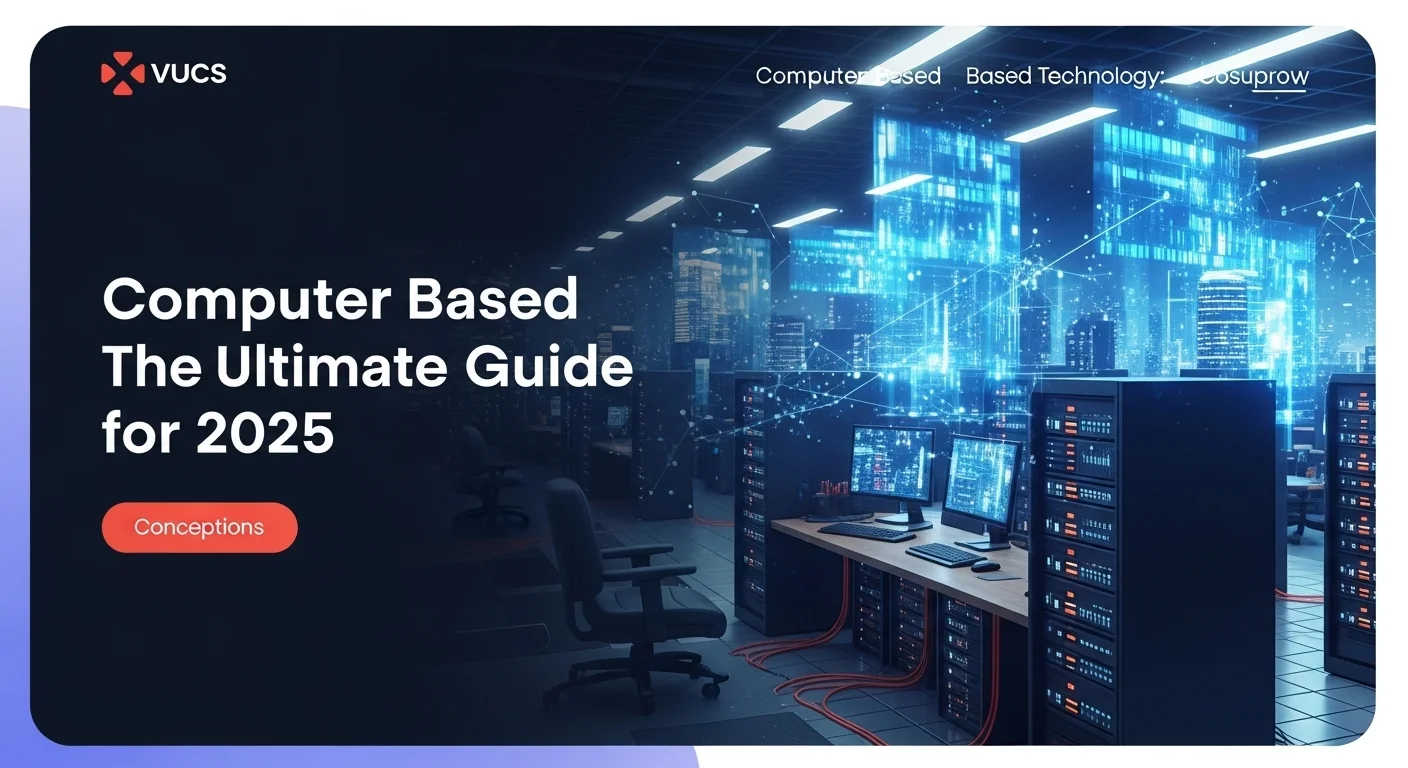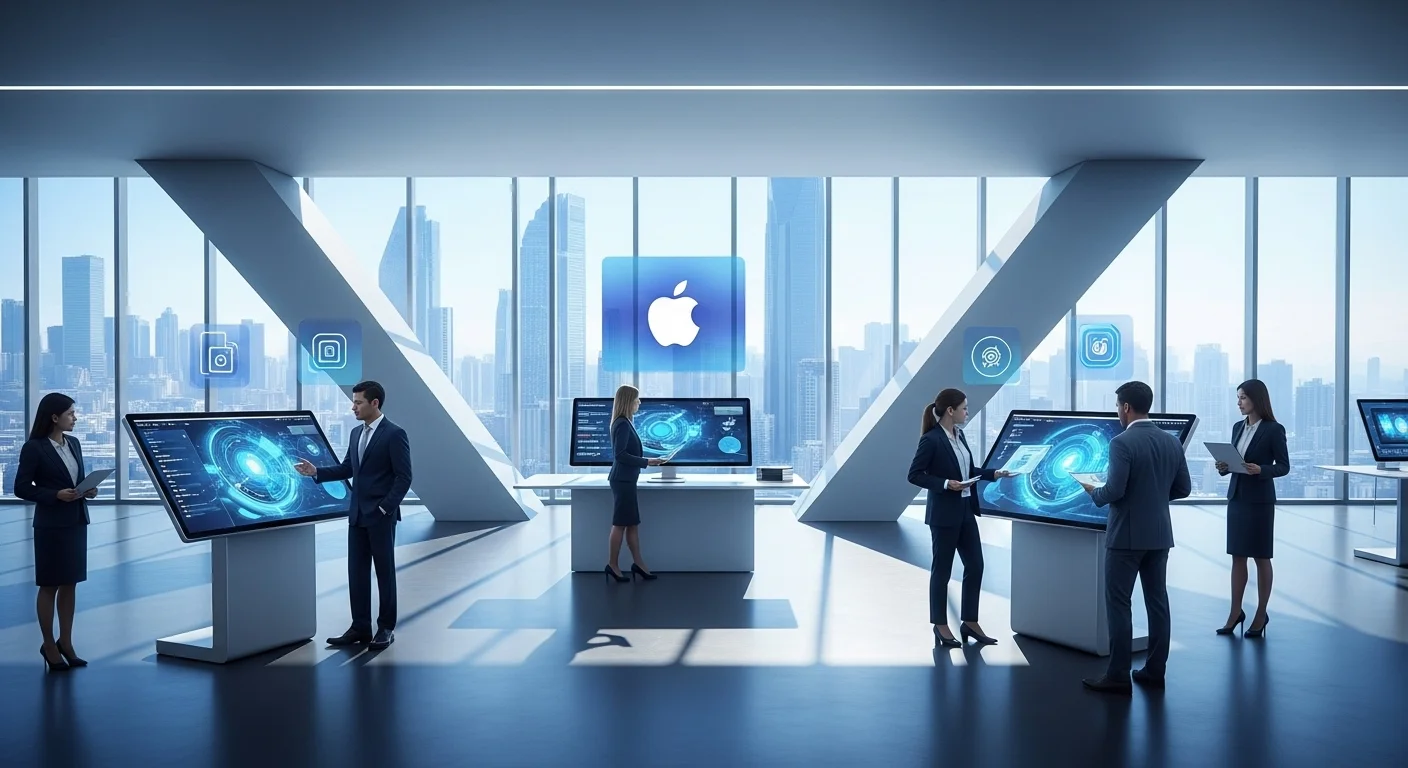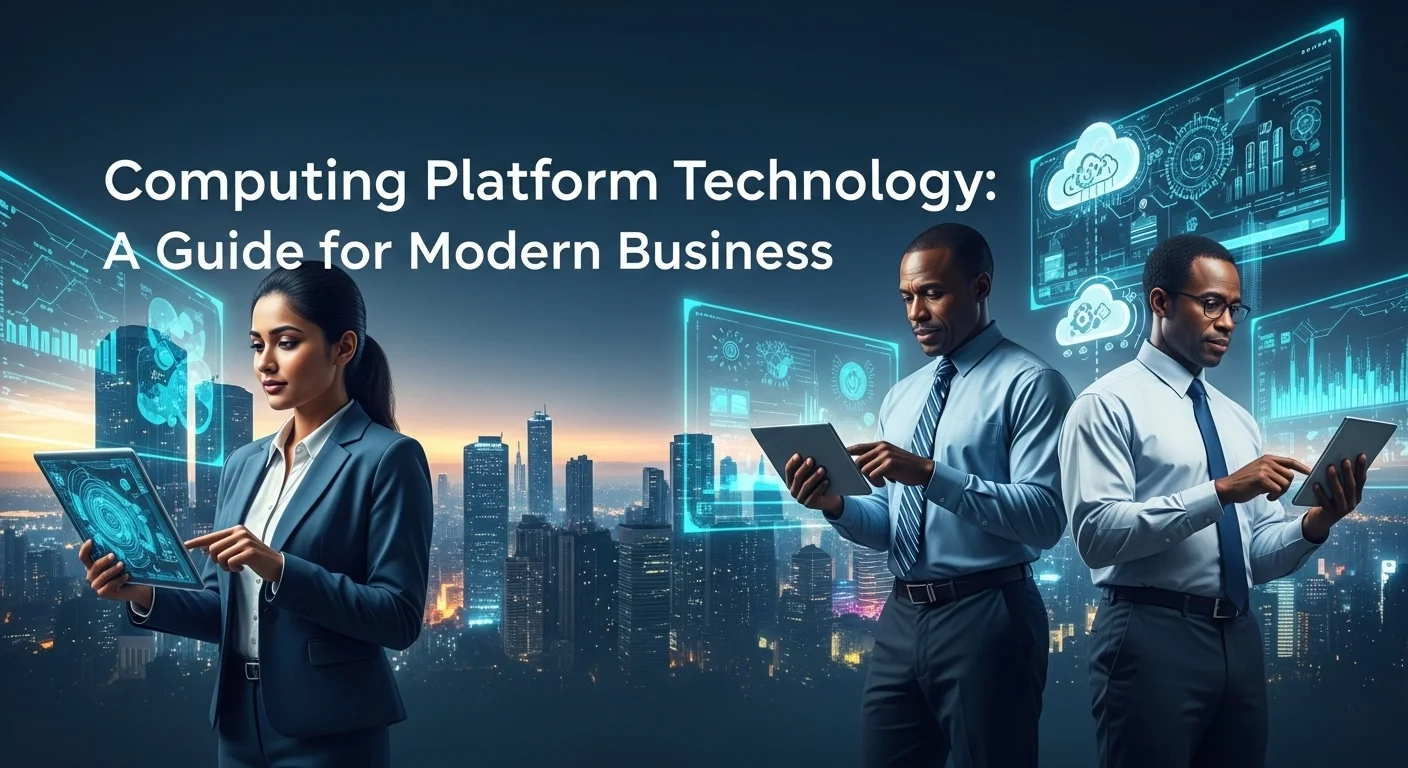Information Security Management in Technology: A 2025 Guide
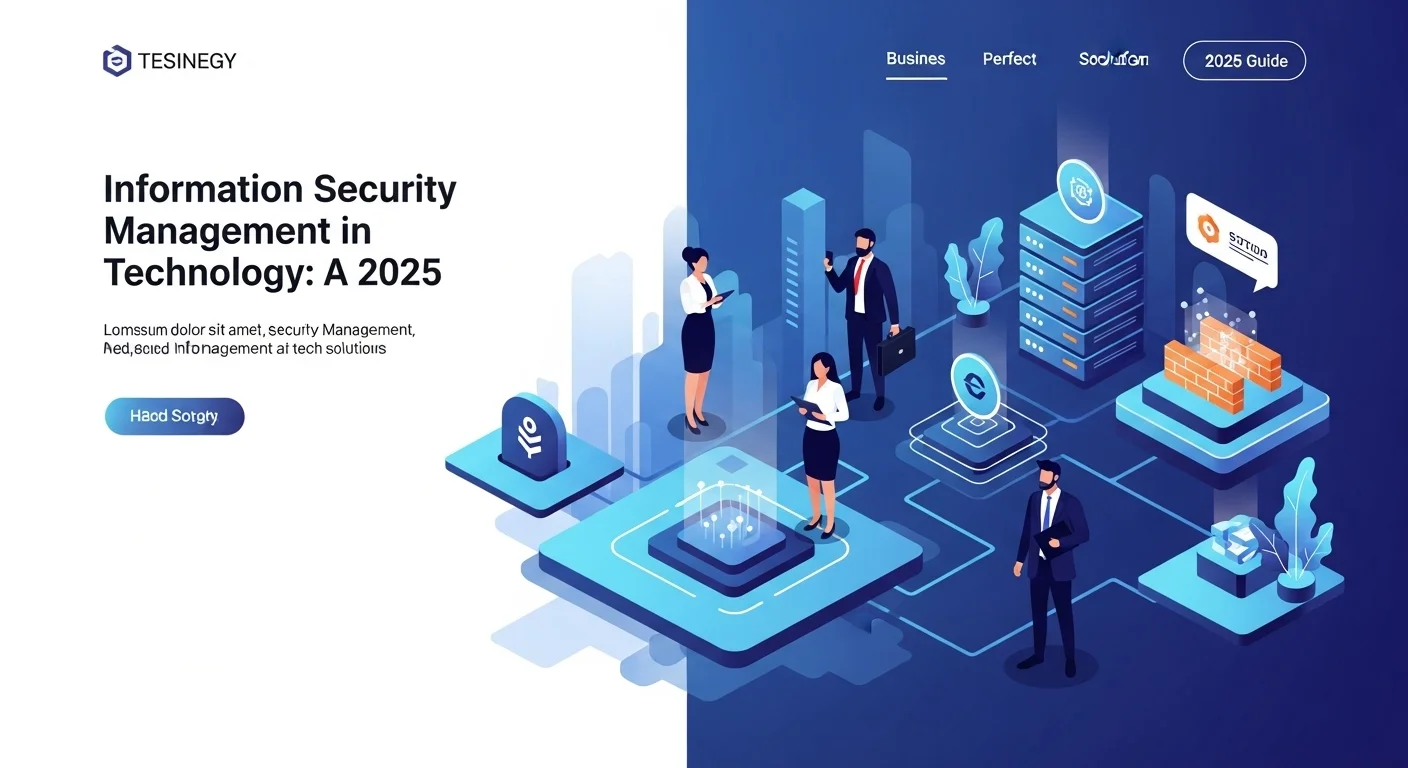
Executive Summary
In today's digitally-driven world, Information Security Management is not just an IT function; it's a core business strategy. This article provides a comprehensive exploration of how technology and robust security practices intersect to protect vital information assets. We delve into the fundamental principles, from the foundational CIA triad to advanced frameworks like ISO 27001 and the NIST Cybersecurity Framework. For business leaders and tech enthusiasts, understanding this discipline is paramount for mitigating risks, ensuring regulatory compliance, and building a resilient organization. The content covers everything from strategic implementation to the granular details of risk management in information security, offering actionable insights. We will discuss how information security and risk management are intertwined, the role of ITIL information security management in service delivery, the necessity of information security in project management, and the operational importance of security information management in cyber security. This guide serves as an essential resource for navigating the complex but crucial landscape of protecting digital information in a competitive and threat-laden environment.
Table of Contents
What is Information Security Management and why is it important in Technology?
Information Security Management, often abbreviated as ISM, is a systematic approach to managing an organization's sensitive information so that it remains secure. It encompasses the people, processes, and technology required to protect and manage information assets. At its core, ISM is not merely about implementing firewalls or antivirus software; it's a holistic management framework designed to identify, manage, and minimize the risks to information. The primary goal is to ensure business continuity, minimize business damage by preventing and reducing the impact of security incidents, and maintain confidentiality, integrity, and availability (the CIA triad) of information. In the context of modern technology, where data is the new oil and digital transformation is reshaping industries, the importance of ISM cannot be overstated. Every email, customer record, financial transaction, and piece of intellectual property is a digital asset that carries inherent value and, consequently, inherent risk.
The foundational pillars of information security are often described by the CIA triad:
- Confidentiality: This principle ensures that information is not disclosed to unauthorized individuals, entities, or processes. In practice, this means implementing access controls, encryption, and data classification policies to ensure that only the right people can view sensitive data. A breach of confidentiality can lead to devastating consequences, including identity theft, corporate espionage, and loss of competitive advantage.
- Integrity: This ensures the accuracy and completeness of information and the methods used to process it. Data must be protected from unauthorized modification. Mechanisms like hashing, digital signatures, and version control are used to maintain data integrity. A failure in integrity could mean that financial records are altered, medical data is corrupted, or critical operational parameters are changed, leading to catastrophic failures.
- Availability: This principle ensures that information and associated assets are accessible and usable upon demand by an authorized entity. High-availability systems, disaster recovery plans, and robust infrastructure are key to maintaining availability. A denial-of-service (DoS) attack, hardware failure, or natural disaster can all threaten availability, bringing business operations to a standstill.
In the fast-paced world of technology, ISM serves as the bedrock of trust. Customers, partners, and employees trust organizations to protect their data. A single significant data breach can shatter this trust, leading to reputational damage that can take years to repair, if ever. Furthermore, the legal and regulatory landscape has become increasingly stringent. Regulations like the General Data Protection Regulation (GDPR) in Europe, the California Consumer Privacy Act (CCPA), and the Health Insurance Portability and Accountability Act (HIPAA) impose severe penalties for non-compliance. A robust ISM program is essential for navigating this complex web of regulations and avoiding hefty fines.
The Critical Role of Risk Management in Information Security
At the heart of any effective ISM strategy lies risk management in information security. This is the process of identifying, assessing, and treating risks to the confidentiality, integrity, and availability of an organization's information assets. It's a proactive, not reactive, discipline. Instead of waiting for an incident to occur, organizations use risk management to anticipate potential threats and vulnerabilities and implement controls to mitigate them to an acceptable level. The process typically involves several key stages:
- Risk Identification: This involves identifying all potential risks to information assets. Risks can be technological (e.g., malware, system failure), human (e.g., insider threats, human error), or environmental (e.g., fire, flood).
- Risk Assessment/Analysis: Once identified, each risk is analyzed to determine its likelihood of occurrence and potential impact on the organization. This helps in prioritizing risks so that the most critical ones are addressed first.
- Risk Treatment/Mitigation: For each significant risk, a treatment plan is developed. There are generally four ways to treat risk: mitigate it by implementing controls, transfer it to another party (e.g., through insurance), avoid it by changing business processes, or accept it if the cost of mitigation outweighs the potential impact.
- Risk Monitoring and Review: Risk management is not a one-time activity. The threat landscape is constantly evolving, and new vulnerabilities are discovered daily. Therefore, risks and the effectiveness of controls must be continuously monitored and reviewed.
- Protection of Assets: The most direct benefit is the protection of valuable information assets from theft, misuse, or damage.
- Enhanced Business Resilience: By anticipating and mitigating risks, ISM helps ensure that business operations can continue even in the face of a security incident or disaster.
- Improved Stakeholder Confidence: A demonstrated commitment to information security builds trust with customers, investors, and partners, enhancing the company's reputation and brand value.
- Regulatory Compliance: ISM provides a structured framework for meeting the requirements of various laws and regulations, avoiding fines and legal action.
- Competitive Advantage: In many industries, having a certified ISM system (like ISO 27001) can be a key differentiator, opening up new business opportunities with security-conscious clients.
The symbiotic relationship between information security and risk management is fundamental. You cannot have effective security without a thorough understanding of the risks you are trying to protect against. This risk-based approach ensures that security investments are targeted, cost-effective, and aligned with business objectives. It prevents organizations from wasting resources on protecting against unlikely threats while ignoring more probable and impactful ones. This strategic alignment is what elevates ISM from a technical function to a critical business enabler.
Business Applications and Benefits of ISM
The applications of Information Security Management are vast and touch every part of a modern enterprise. In finance, it protects sensitive transaction data and customer financial information. In healthcare, it safeguards patient records and ensures HIPAA compliance. In manufacturing, it protects intellectual property and ensures the integrity of industrial control systems. The benefits of implementing a comprehensive ISM framework are equally broad:
As technology becomes more complex with the adoption of cloud computing, IoT, and AI, the scope of ISM continues to expand. The principles, however, remain the same: understand your assets, understand your risks, and implement a systematic program to manage those risks effectively. This is where frameworks and best practices, such as the integration of itil information security management, come into play. ITIL (Information Technology Infrastructure Library) provides a framework for IT service management that aligns IT services with the needs of the business. Integrating ISM into the ITIL framework ensures that security is a core component of all IT service lifecycle stages, from design and transition to operation and continual improvement. Similarly, considering information security in project management is crucial. Security must be a consideration from the very beginning of any new project or system development, a concept known as 'security by design'. Bolting security on at the end is invariably more expensive and less effective. Finally, the operational aspect is handled by security information management in cyber security, often through tools like Security Information and Event Management (SIEM), which provide real-time analysis of security alerts generated by applications and network hardware. This comprehensive view, from strategic planning to real-time operations, is the hallmark of mature Information Security Management.

Complete guide to Information Security Management in Technology and Business Solutions
A comprehensive approach to Information Security Management (ISM) requires more than just a conceptual understanding; it demands a deep dive into established frameworks, technical methods, and business processes. This guide provides a detailed look at the components needed to build a robust and effective Information Security Management System (ISMS), a systematic approach to managing sensitive company information. An ISMS is the practical embodiment of an ISM strategy, providing the policies, procedures, and controls to protect information assets.
Key Frameworks and Standards for ISM
Organizations do not need to invent ISM from scratch. Several internationally recognized frameworks and standards provide a blueprint for building an effective ISMS. Adopting one of these frameworks helps ensure a comprehensive and best-practice approach.
- ISO/IEC 27001: This is the premier international standard for information security management. It specifies the requirements for establishing, implementing, maintaining, and continually improving an ISMS. Certification to ISO 27001 is a formal, independent verification that an organization's ISMS meets the standard's rigorous requirements. The standard is built around a process of continuous improvement, often summarized by the Plan-Do-Check-Act (PDCA) cycle. A core component of ISO 27001 is the Statement of Applicability (SoA), which documents which of the 114 controls from Annex A are relevant and have been implemented to address identified risks. This standard heavily emphasizes the importance of risk management in information security as the central driver for all security activities.
- NIST Cybersecurity Framework (CSF): Developed by the U.S. National Institute of Standards and Technology, the NIST CSF provides a voluntary framework of standards, guidelines, and best practices to manage cybersecurity risk. It is organized around five core functions: Identify, Protect, Detect, Respond, and Recover. The CSF is highly adaptable and is designed to be integrated into an organization's existing risk management processes. It provides a common language for both technical and non-technical stakeholders to understand, manage, and express cybersecurity risk. Its focus on response and recovery makes it a powerful tool for building resilience. The synergy between information security and risk management is a central theme of the NIST CSF.
- COBIT (Control Objectives for Information and Related Technologies): Created by ISACA, COBIT is a framework for the governance and management of enterprise IT. While its scope is broader than just security, it provides a comprehensive set of controls and processes that are essential for ISM. COBIT helps organizations create optimal value from IT by maintaining a balance between realizing benefits and optimizing risk levels and resource use. It is particularly useful for aligning IT strategy with business goals and ensuring that IT is governed and managed in a holistic manner.
Technical Methods and Controls
An ISMS is supported by a wide array of technical controls designed to enforce security policies. These are the practical, technological measures that protect information systems.
- Access Control: These mechanisms are designed to control who can view or use resources in a computing environment. This includes authentication (verifying a user's identity with passwords, biometrics, or multi-factor authentication), authorization (granting the appropriate level of access), and accounting (tracking user activity).
- Cryptography: Encryption is the process of converting data into a code to prevent unauthorized access. It is essential for protecting data both 'at rest' (stored on a disk) and 'in transit' (moving across a network). Hashing and digital signatures are other cryptographic techniques used to ensure data integrity and non-repudiation.
- Network Security: This involves protecting the network infrastructure from unauthorized access, misuse, or disruption. Key technologies include firewalls to filter network traffic, Intrusion Detection and Prevention Systems (IDPS) to identify and block malicious activity, and Virtual Private Networks (VPNs) to secure remote access.
- Vulnerability Management: This is the continuous process of identifying, classifying, remediating, and mitigating vulnerabilities in systems and software. It involves regular vulnerability scanning, penetration testing, and a robust patch management program to ensure that known security flaws are addressed promptly.
Business Techniques and Processes
Technology alone is not enough. Effective ISM relies on well-defined business processes and a strong security culture.
- Security Policies and Procedures: A comprehensive set of security policies forms the foundation of an ISMS. These high-level documents outline the organization's security goals and rules. They are supported by detailed procedures that specify how to carry out specific security tasks.
- Security Awareness and Training: Humans are often the weakest link in the security chain. A continuous program of security awareness and training is essential to educate employees about their security responsibilities, common threats like phishing, and the organization's security policies.
- Incident Response Planning: It's not a matter of if, but when, a security incident will occur. A formal incident response plan outlines the steps to be taken in the event of a breach. This includes containment, eradication, recovery, and post-incident analysis (lessons learned) to improve future responses.
- Business Continuity and Disaster Recovery (BCDR): These plans are designed to ensure that critical business functions can continue in the event of a major disruption. Business Continuity Planning (BCP) focuses on the business processes, while Disaster Recovery (DR) focuses on restoring the IT infrastructure.
Integrating Frameworks: ITIL, Project Management, and SIEM
To achieve a truly holistic security posture, ISM must be integrated with other management disciplines. This is where concepts like itil information security management become vital. ITIL's structured approach to IT service management provides numerous touchpoints for integrating security. For example, within ITIL's Change Management process, all changes to the IT environment must be assessed for their security impact. In Incident Management, security incidents must be handled according to the established incident response plan. This integration ensures that security is not an isolated silo but a shared responsibility across the IT organization.
Similarly, the practice of information security in project management is critical for building secure systems from the ground up. By integrating security activities into the project lifecycle (e.g., conducting threat modeling during the design phase, performing code reviews during development, and security testing before deployment), organizations can avoid costly and ineffective security retrofitting. This 'Shift Left' approach to security is a cornerstone of modern DevSecOps practices.
On the operational front, security information management in cyber security is the key to effective threat detection and response. This is primarily achieved through Security Information and Event Management (SIEM) systems. A SIEM solution collects log data from various sources across the network (servers, firewalls, applications, etc.), correlates the events to identify potentially malicious activity, and generates alerts for security analysts to investigate. Modern SIEMs often incorporate User and Entity Behavior Analytics (UEBA) and Security Orchestration, Automation, and Response (SOAR) capabilities to improve detection accuracy and automate response actions, enabling security teams to handle the massive volume of security data generated in a large enterprise.
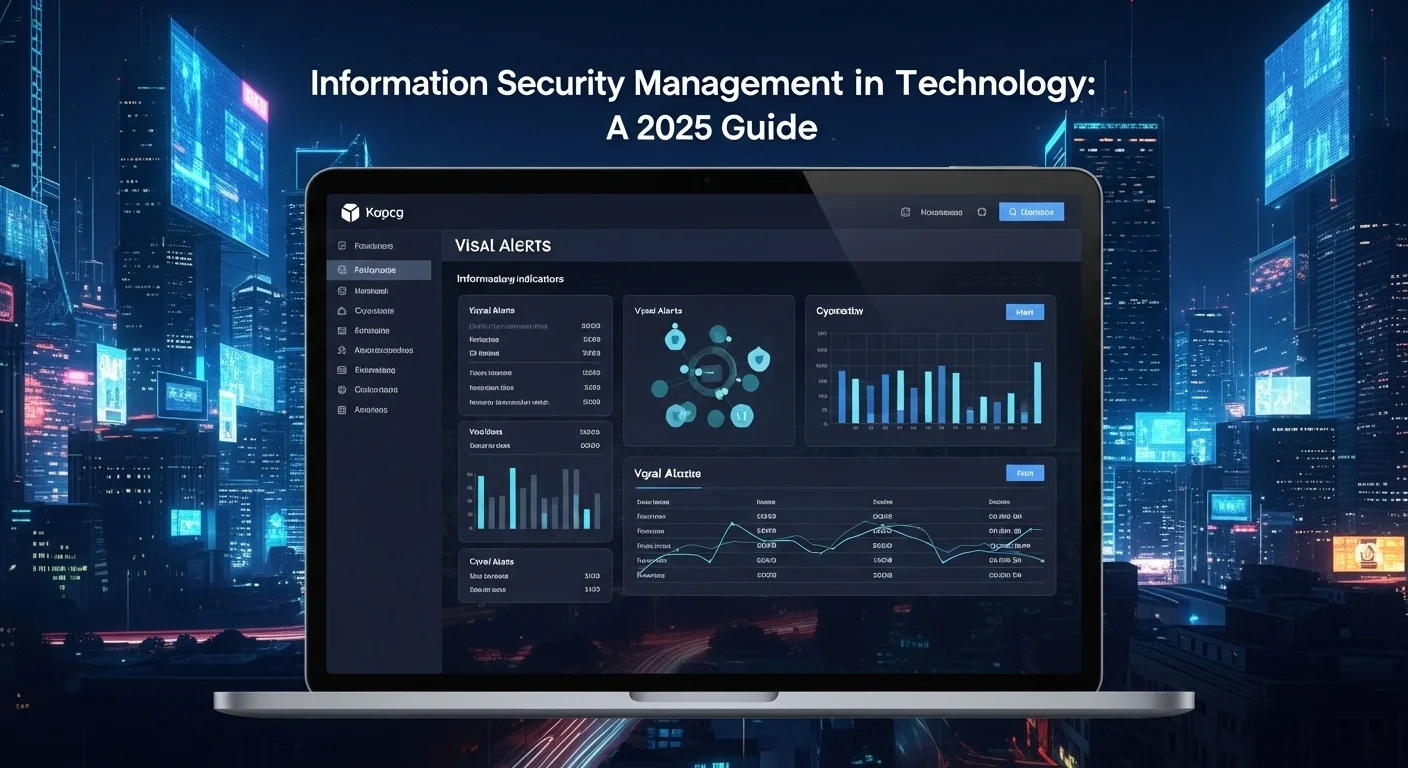
Tips and strategies for Information Security Management to improve your Technology experience
Implementing a successful Information Security Management (ISM) program is a journey, not a destination. It requires continuous effort, strategic planning, and the right combination of people, processes, and technology. This section provides practical tips, strategies, and best practices to enhance your ISM program and, by extension, your organization's overall technology and business resilience. The goal is to move from a theoretical understanding to a state of operational excellence in information security.
Best Practices for a Mature ISM Program
Adhering to best practices is the surest way to build a sustainable and effective ISM program. These practices are distilled from the collective experience of security professionals and leading organizations worldwide.
- Executive Sponsorship and Governance: The single most important factor for success is buy-in from the top. Executive leadership must understand and support the ISM program, providing the necessary resources and authority. Establish a formal governance structure, such as a security steering committee, to provide oversight, set strategic direction, and ensure alignment with business objectives.
- Cultivate a Security-Conscious Culture: Technology and policies can only go so far. Your employees are your first line of defense. Foster a culture where security is everyone's responsibility. This involves continuous awareness training that is engaging and relevant, regular communication about threats, and positive reinforcement for good security practices. Phishing simulations are an excellent tool for training and measuring the effectiveness of your awareness program.
- Adopt a Risk-Based Approach: Do not try to protect everything equally. Focus your resources on protecting your most critical assets and mitigating your most significant risks. A robust process for risk management in information security is non-negotiable. Regularly review and update your risk assessments to reflect changes in the business environment and the threat landscape. This ensures that your security efforts remain relevant and cost-effective.
- Continuous Monitoring and Improvement: The threat landscape is dynamic, and so your defenses must be as well. Implement a program of continuous monitoring to detect and respond to threats in near real-time. This goes beyond just log monitoring and includes vulnerability scanning, configuration checking, and threat intelligence feeds. Use the Plan-Do-Check-Act (PDCA) model, central to standards like ISO 27001, to continually review and improve your ISMS.
- Layered Defense (Defense-in-Depth): There is no single silver-bullet security solution. A layered defense strategy involves implementing multiple, overlapping security controls. If one control fails, another is there to back it up. This applies to technology (e.g., firewall, IPS, endpoint protection), processes (e.g., separation of duties), and people (e.g., training, background checks).
Essential Business and Technology Tools
A variety of tools are available to support and automate ISM processes. Selecting the right tools can significantly improve efficiency and effectiveness.
- Security Information and Event Management (SIEM): As mentioned previously, SIEM tools are the cornerstone of modern security operations. They provide centralized logging, correlation, and alerting. Leading platforms include Splunk, IBM QRadar, and Microsoft Sentinel. Effective security information management in cyber security is impossible at scale without a capable SIEM.
- Vulnerability Management Tools: These tools scan your networks and systems for known vulnerabilities. Popular solutions like Tenable Nessus, Qualys, and Rapid7's InsightVM help automate the process of finding and prioritizing security weaknesses.
- Governance, Risk, and Compliance (GRC) Platforms: GRC platforms help organizations manage their overall governance, risk management, and compliance with regulations. They provide a centralized repository for policies, controls, and risk assessments, and they can automate workflows for audits and reporting.
- Endpoint Detection and Response (EDR): Traditional antivirus is no longer sufficient. EDR solutions provide advanced threat detection, investigation, and response capabilities directly on endpoints (laptops, servers, etc.). CrowdStrike Falcon and SentinelOne are leaders in this space.
- Identity and Access Management (IAM) Solutions: IAM tools manage user identities and their access to resources. They enforce authentication policies, provide single sign-on (SSO) capabilities, and manage access privileges, supporting the principle of least privilege. Okta and Azure Active Directory are prominent examples.
Integrating Security into the Business Fabric
For ISM to be truly successful, it must be woven into the fabric of the organization. This means integrating it with other key business functions.
- ITIL and Information Security Management: The integration of itil information security management ensures that security is a key consideration in all IT service management processes. For instance, when a new service is designed (Service Design), a security review must be part of the process. When an incident occurs (Incident Management), security incident response procedures must be triggered. This alignment prevents security from being an afterthought in IT operations.
- Information Security in Project Management: Every new project, whether it's developing a new application or implementing a new cloud service, introduces new risks. Integrating information security in project management methodologies (like PRINCE2 or Agile) is essential. This means including security requirements in the project charter, conducting risk assessments at key milestones, and allocating budget and resources for security activities. A 'Security Champion' on the project team can be highly effective.
- Vendor Risk Management: Your organization's security is only as strong as your weakest link, and that link might be one of your vendors or suppliers. A comprehensive third-party risk management program is crucial. This involves conducting security assessments of potential vendors, including security requirements in contracts, and periodically auditing your existing vendors to ensure they continue to meet your security standards.
By combining these strategies, best practices, and tools, organizations can build a mature, resilient, and effective Information Security Management program. This proactive stance not only protects the organization from an ever-increasing array of cyber threats but also enables the business to innovate and adopt new technologies with confidence. For further reading and authoritative guidance, an excellent external resource is the NIST Cybersecurity Framework website, which provides a wealth of information and resources for organizations of all sizes. The relationship between information security and risk management is the central theme that, when properly addressed, leads to true cyber resilience.
Expert Reviews & Testimonials
Sarah Johnson, Business Owner ⭐⭐⭐
The information about Information Security Management is correct but I think they could add more practical examples for business owners like us.
Mike Chen, IT Consultant ⭐⭐⭐⭐
Useful article about Information Security Management. It helped me better understand the topic, although some concepts could be explained more simply.
Emma Davis, Tech Expert ⭐⭐⭐⭐⭐
Excellent article! Very comprehensive on Information Security Management. It helped me a lot for my specialization and I understood everything perfectly.

